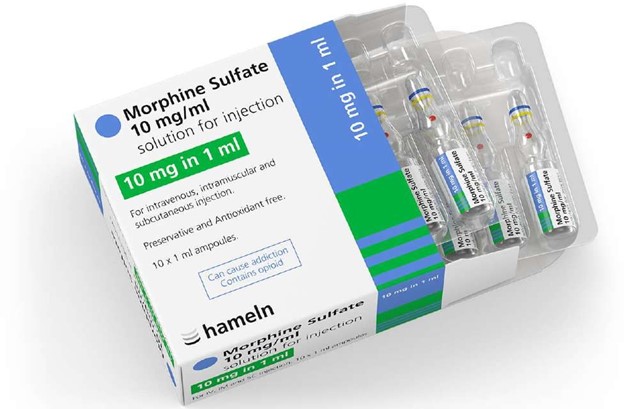A nurse is preparing to administer sulfadiazine 150mg/kg PO to divide equally every 6 hr to an adolescent who weighs 88 Ib.
Available is sulfadiazine 500 mg/tab.
How many tablets should the nurse administer per dose?
(Round to the nearest whole number. Use a leading zero if it applies. Do not use a trailing zero.).
1 tablet.
3 tablets.
4 tablets.
8 tablets.
The Correct Answer is B
Step 1: Convert weight from lb to kg.
88 lb ÷ 2.2 = 40 kg
Step 2: Calculate total daily dose in mg.
150 mg/kg × 40 kg = 6000 mg
Step 3: Calculate dose per administration (every 6 hr).
6000 mg ÷ 4 = 1500 mg
Step 4: Calculate number of tablets per dose.
1500 mg ÷ 500 mg/tab = 3 tablets
Answer:
3 tablets per dose.
Nursing Test Bank
Naxlex Comprehensive Predictor Exams
Related Questions
Correct Answer is D
Explanation
Ceftriaxone is contraindicated for this client because it is a cephalosporin antibiotic, which has a similar structure to penicillin and can cause cross-reactivity in individuals with a penicillin allergy.
Choice A is wrong because Vancomycin is not a beta-lactam antibiotic and does not have cross-reactivity with penicillin.
Choice B is wrong because Clarithromycin is a macrolide antibiotic and does not have cross-reactivity with penicillin.
Choice C is wrong because Metronidazole is a nitroimidazole antibiotic and does not have cross-reactivity with penicillin.
Correct Answer is B
Explanation

Opioids such as morphine are used to relieve moderate to severe pain in cancer patients.
Choice A is wrong because ibuprofen is a nonsteroidal anti-inflammatory drug (NSAID) that may be used to relieve mild pain, not moderate pain.
Choice C is wrong because acetaminophen may be used to relieve mild pain, not moderate pain.
Choice D is wrong because aspirin is an NSAID that may be used to relieve mild pain, not moderate pain.
Whether you are a student looking to ace your exams or a practicing nurse seeking to enhance your expertise , our nursing education contents will empower you with the confidence and competence to make a difference in the lives of patients and become a respected leader in the healthcare field.
Visit Naxlex, invest in your future and unlock endless possibilities with our unparalleled nursing education contents today
Report Wrong Answer on the Current Question
Do you disagree with the answer? If yes, what is your expected answer? Explain.
Kindly be descriptive with the issue you are facing.
